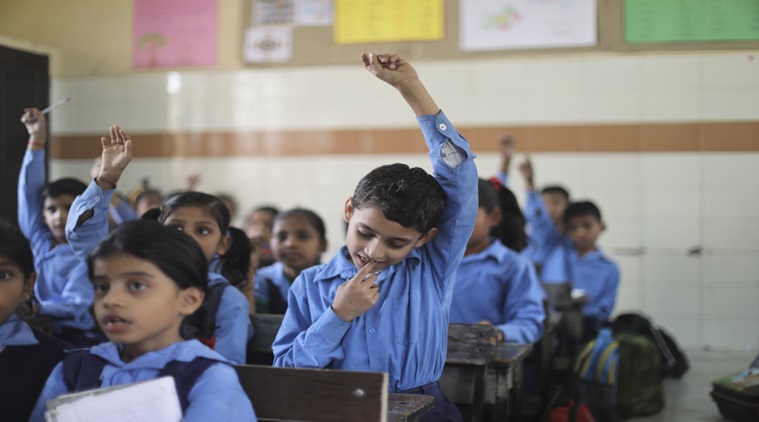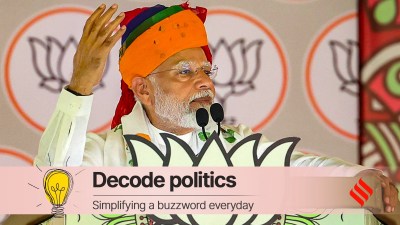- India
- International
Gujarat: Nearly 30% students of class 5 and 8 to be detained from this year post amendment of RTE act
Nearly 6.45 lakh students from Class 6 to Class 8 from over 32,000 government schools were part of the 'Mission Vidya' campaign.
 Between 30 and 33 per cent of the total number of students in classes 5 and 8 could be detained. (Representational image)
Between 30 and 33 per cent of the total number of students in classes 5 and 8 could be detained. (Representational image)
Around 2.5 to 2.7 lakh students in the state are expected to be detained in the same class from this academic year, after Gujarat last month decided to implement an amendment of the Right to Education Act that was passed by Parliament in January. One of the amendments to the RTE Act was the scrapping of the no-detention policy, and it allowed states to take a call on whether to detain weak students or not. Citing this, State Education Minister Bhupendrasinh Chudasama announced in his Budget speech last month that Gujarat would detain students from class 5 and class 8, from the current academic year if they failed their examinations.
In January, soon after Parliament passed the amendment, Chudasama said the Gujarat government had been demanding it for long, and that it would be implemented in the March-April 2020 annual examinations. He said that the no-detention policy had adversely affected learning levels of children in Gujarat, and directly impacted the state education board results, too. “After this amendment and remedial programmes for detained students, the (board exam) results will be improved,” he had said at the time.
Video | HRD to introduce new BEd curriculum, teacher training programmes
Now, between 30 and 33 per cent of the total number of students in classes 5 and 8 could be detained. A four-year projection by the state education department, based on the overall pass percentage of Class 10 students under the Gujarat Secondary and Higher Secondary Education Board (GSHSEB), reveals that the numbers would go up in the second and third year.
Video | HRD to introduce new BEd curriculum, teacher training programmes

“These 2.5 lakh students who are held back in Class 8 will add to the fresh 8 lakh students in the first year of scrapping of no-detention policy,” a senior education official said, explaining the numbers estimated for four years. “From this 10-10.5 lakh students, around 3.25-3.5 lakh students will be held back in the second year. Similarly, in the third year, among those detained in both classes, a few are expected to drop out, while a few are expected to clear (be promoted to the next class). Thus, by the fourth year this will ease out, making the number of detained students highest in the third year.”
As Minister Chudasma had said, one of the aims of the move to detain weak students in lower classes was to improve the pass percentage of students by the time they are in class 10, taking the board examinations. The pass percentage in class 10 has been between 63 and 67 per cent in the past five years. However, based on the learning levels of government primary school students and going by the recently conducted Mission Vidya campaign aimed at improving reading, writing and mathematics skills of students from Class 6 to Class 8, the expected outcome seems bleak.
The campaign results revealed that only 43 per cent improvement in writing, while for reading it was 48 per cent. The state government launched the campaign during the previous academic session to raise the learning levels of students from Class 6 to Class 8 who scored low in the latest Gunotsav VIII evaluation. Gunotsav is an annual evaluation drive of government primary schools, which is a mix of external and internal assessment of students and schools.
Nearly 6.45 lakh students from Class 6 to Class 8 from over 32,000 government schools were part of the ‘Mission Vidya’ campaign. The education department is relying on corrective measures to improve the learning levels of primary school students.
Apr 23: Latest News
- 01
- 02
- 03
- 04
- 05






































